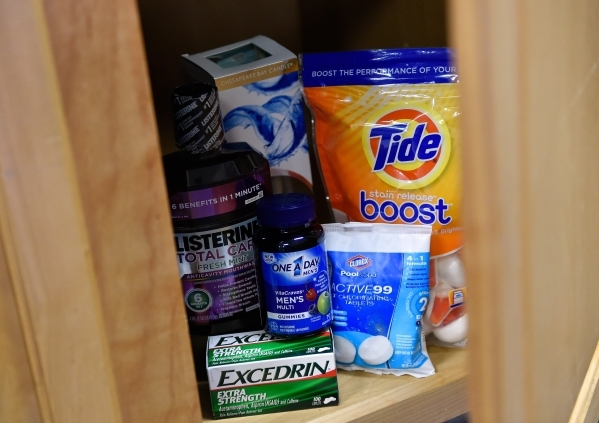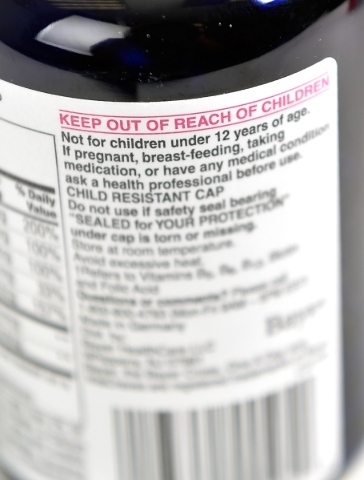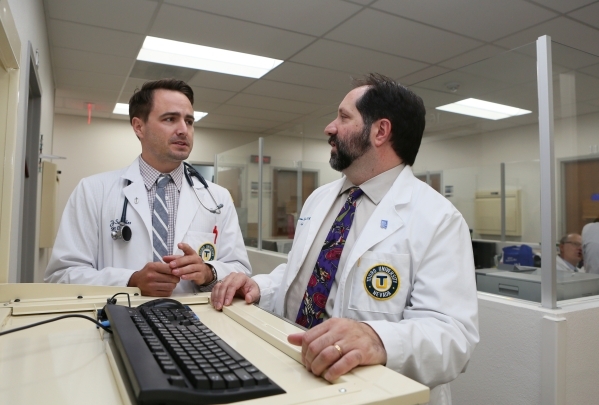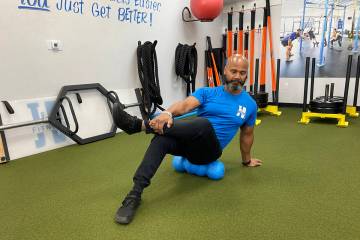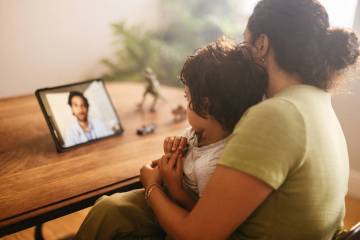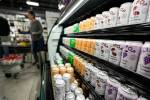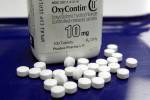Parents should consider pretty poisons when protecting kids
Puffy pillows of laundry detergent. A bottle of what looks like a flavored soft drink mix. A jar filled with what could be gummy candies.
Such appealing packages for potential poisons.
Fact is, many of the everyday items found around your home — from cosmetics to cleaners to vitamins and nutritional supplements to over-the-counter and prescription drugs — can be dangerous or deadly to an inquisitive child.
The Nevada Poison Center, an affiliate of the Rocky Mountain Poison & Drug Center in Denver, reports that last year it received 25,082 calls from Nevadans through its 24-hour hotline, 1-800-222-1222. Forty-four percent of those calls involved children younger than 5.
But the 11,000-plus kids those calls to the center represent don't include Nevada children who were taken directly to doctors' offices or emergency rooms by parents worried that the kids may have swallowed a potentially toxic something.
According to the center, poisoning is "the second-leading cause of unintentional death due to injury in the United States."
"We continue to work at better educating families about how to protect kids because, far and away, the single most important thing we can do ... is preventing (poisonings) from happening in the first place," says Dr. Andrew Eisen, an associate professor of pediatrics at Touro University Nevada College of Osteopathic Medicine and member of the American Academy of Pediatrics' Council on Injury, Violence and Poison Prevention.
Keeping children away from toxic substances is every parent's mission, but the sheer number of potential poisons found around the home can make that challenging. Another challenge is that some of the most significant poisoning risks children face in the home are associated with everyday things we use so routinely that we can forget how dangerous they can be.
Consider, says Dr. Sunita Kalra, a family physician with HealthCare Partners Nevada, lighter fluid at the backyard barbecue, detergent pods for your dishwasher, the arsenal of cleaning products stored all over the house, "personal care products (such as) nail polish remover, or certain lotions and facial things women use, or simple things like pain relievers (such as) Tylenol that nobody thinks is a big deal."
So we dutifully lock away the cleanser and the drain opener. But how about that bottle of mouthwash on the bathroom sink, one common brand of which contains, according to its label, almost 22 percent alcohol?
"Mouthwash is not particularly dangerous if used the way it is supposed to, but if (a child) swallows a significant portion of it, it can be toxic," Eisen says.
And those vitamins and nutritional supplements you keep on a kitchen countertop? "Many vitamins in large doses can cause (children) some real problems," Eisen adds, "particularly when we look at vitamins available in sort of gummy forms. They look like candy."
According to the Rocky Mountain Poison & Drug Center, the most common poison categories for children up to 5 years of age are cosmetics and personal care products, analgesics, household cleaning substances, topical preparations, foreign bodies (toys, for example), antihistamines, vitamins, gastrointestinal preparations, cardiovascular drugs and hormones.
"Certainly cleaning products are going to continue to be a big issue because they're often in brightly colored containers," Eisen says. "They're often scented and attractive, and they're stored in accessible places."
But, he continues, "the other thing is over-the-counter medicines, often because they're viewed as safe things. So people aren't as concerned with them as prescription medications, although prescription medications, too, are a risk, and people need to be careful how they store prescription medicines so they can't be accessed inappropriately."
Also potentially poisonous to children are alcoholic beverages. Adults often "keep alcohol in the bottom of the pantry or whatever, and kids will get into it," Eisen says.
Another poison hazard of more recent vintage are the cartridges of liquids used in e-cigarettes, Eisen says. "That liquid nicotine is highly toxic, incredibly concentrated, very dangerous stuff."
In the yard and garage, pool chemicals, insecticides and other home and yard preparations can attract the attention of a curious kid. Store all of them secured in a locked cabinet or high up on shelving "that's secured to the wall and will not tip over," Eisen says.
Symptoms of poisoning vary, depending upon the specific substance ingested. But, Eisen says, "some of the things we'll commonly see for toxic ingestions is vomiting, abdominal pain, drooling, disorientation — acting funny — or being very drowsy or sleepy."
Also be aware, Kalra says, of burns on the skin, the smell of chlorine or lighter fluids on the skin or breath, or pain or redness in the mouth that makes the child not want to eat, drink or swallow.
Sometimes, a parent might have to simply infer that a child has taken something toxic.
"If you find your 2-year-old sitting next to an open bottle and there are some pills on the floor and you don't know if he has swallowed them or not, assume he got some and be on the safe side," Eisen says.
Note, also, that symptoms of poisoning may take time to develop. It a child swallows a small button battery of the sort used in greeting cards, "they may not react right away," Kalra says. "It can take up to eight hours to start breaking down in the stomach."
Similarly, Eisen says, some diabetes medications "are very potent and very long-acting. If a small child gets into this ... it can drop (his) blood sugar to a dangerous level, and that can last for days. It can cause serious damage or even be fatal."
If a child is experiencing urgent, serious symptoms such as difficulty breathing, seizure or unconsciousness, call 911 immediately, Eisen says. In other cases — if, for example, you suspect that a child has ingested something toxic but he or she shows no symptoms — a call to a poison control center will offer immediate guidance about what to do.
In fact, the Rocky Mountain Poison & Drug Center says that 66 percent of the calls from Nevadans that it managed last year did not require an ER visit.
Eisen notes that the number to call — 1-800-222-1222 — "is the same number anywhere in the country."
Callers to that number will be directed to their own regional poison control center. However, Eisen adds, if the number you're calling from (on a cellphone, for instance) has a different area code than the city where you actually are, be sure to tell the operator where you're calling from to ensure you're not connected to the incorrect regional center.
Follow the advice given by the center. In the meantime, don't administer syrup of ipecac or do anything else to induce vomiting. While those were staples of first aid for poisoning a few decades ago, neither are recommended today.
"You run the risk of them vomiting and then inhaling their own vomit and that, obviously, can cause problems," Eisen says, adding that the American Academy of Pediatrics now advises "against keeping syrup of ipecac in the home."
Contact reporter John Przybys at jprzybys@reviewjournal.com or 702-383-0280 or follow @JJPrzybys on Twitter.



